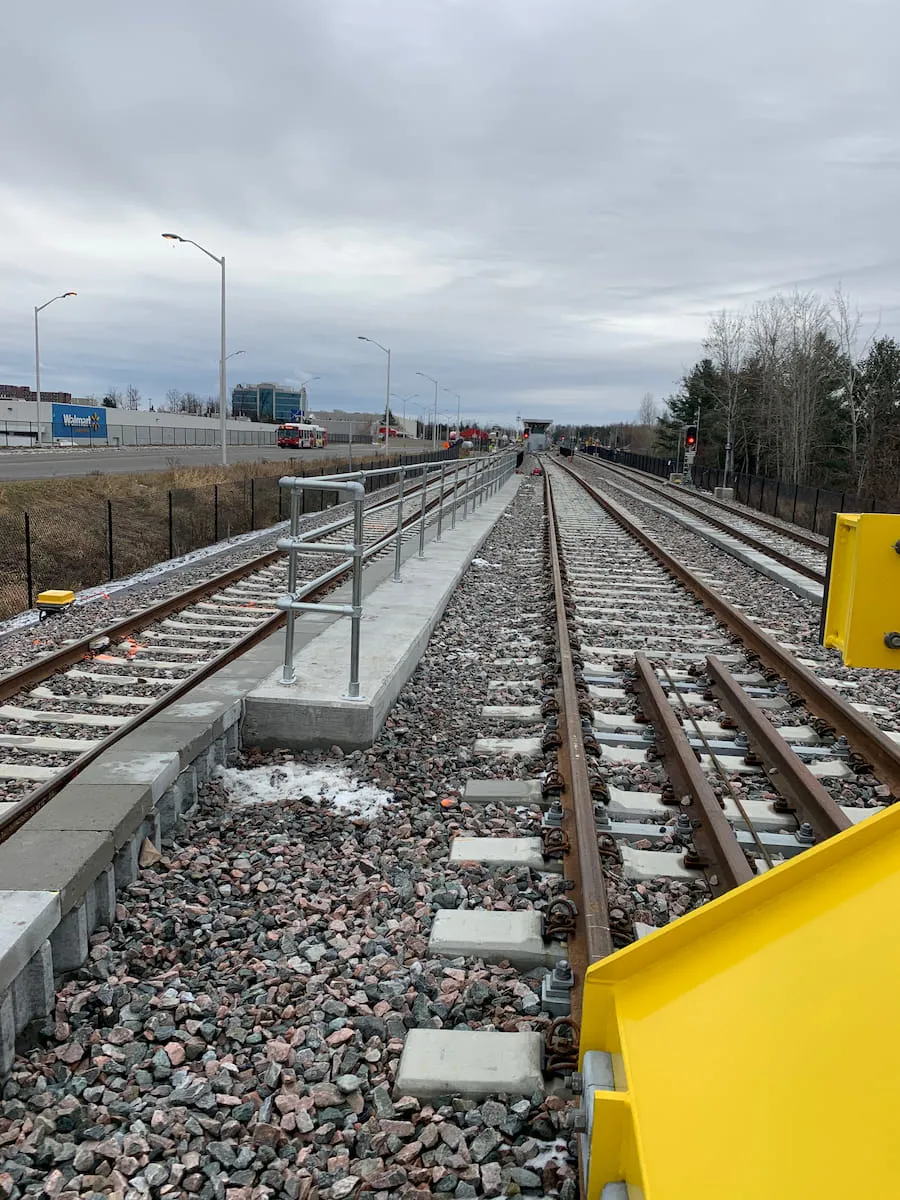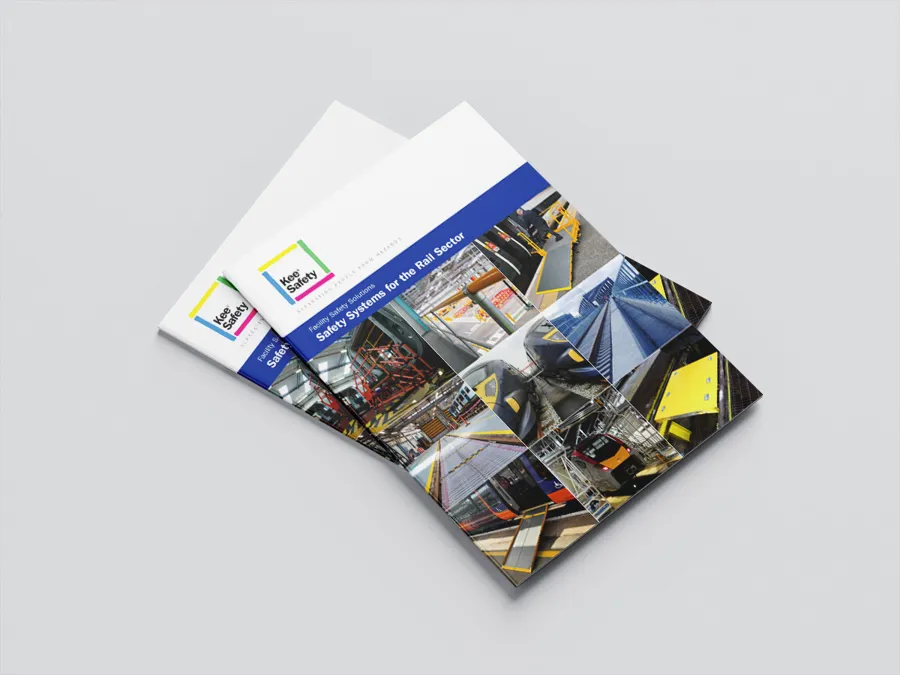
You are visiting the Canada Kee Safety website from United States. Would you like to go to the United States site?

During the early days of train travel, conductors would shout, “All aboard!” Passengers scrambled into the cars. The conductor leaned out of a window and looked along the platform to make sure everyone boarded safely.
You may still hear “all aboard” on scenic or historic train tours, but speaker systems have taken over, often adding a safety warning, “Mind the gap.”
Passenger safety, accessibility, and efficient movement are important to the rail industry in Canada. Safety is also a vital concern behind the scenes, where maintenance workers need to access railcars from above, below, and on the sides. Train stations, depots, signals, and track infrastructure also require regular inspections and maintenance.
Engineered safety systems from Kee Safety Canada enable the rail industry to provide optimum safety solutions that meet or exceed Canadian Standards Association (CSA Z259) fall protection standards and provincial Occupational Health & Safety (OHS) regulations.

The CSA Z259 Fall Protection Suite offers comprehensive guidance on active fall protection, from personal equipment to fully engineered system design. Notable standards include:
Provincial regulations will often cite CSA Z259 and further mandate rail industry OH&S compliance. For example, operators will need to implement safety equipment such as guardrails, lifelines, and anchor points wherever fall hazards exist.
Kee Safety Canada offers a wide range of “active” and “passive” fall protection solutions that adhere to CSA Z259 standards and OH&S regulatory requirements. Both active and passive systems help ensure rail yards and train stations’ compliance in safe, productive environments.
Active systems, such as harnesses, lifelines, and anchors, directly involve the user and require certified training and regular inspections of equipment. Passive systems provide a barrier between the worker and the fall hazard and are preferable because they protect multiple workers without special equipment or training.


An overhead fall arrest rail system that is easy to install and reposition, modular rigid rail allows hands-free work from above with a short-drop fall distance. It is ideal for locomotive and railcar maintenance, loading and unloading, and areas with a minimal fall clearance.
Engineered horizontal lifelines are an energy-absorbing system that allows freedom of movement while keeping workers securely attached and anchored. They provide continuous fall protection along rooftops, ceilings, and other elevated areas.
For flat and low-sloped roofs, freestanding, modular guardrail systems adapt to virtually any roof layout and are installed without penetrating the roof. They are constructed of aluminum or galvanized steel for strength, durability, and corrosion resistance.

Designed to provide stable, comfortable, and ergonomic access in rail yards, access platforms feature a modular design to adapt to site-specific needs. Featuring anti-slip, self-draining treads, robust frames, and integrated guardrails, they are safer and more productive than ladders.
In addition to servicing railcars, they can be deployed for rolling stock inspections, depot operations, and signal and track maintenance. Types of platforms include:

Ideal for use at stations to protect passengers as well as workers on platforms, walkways, mezzanines, and high-traffic areas, modular safety railing systems built from aluminum or galvanized steel withstand harsh conditions. They are easy to install as they do not involve welding or drilling.
Maintenance pits provide necessary access from below railcars, but an open pit when trains and carriages are not being serviced is a serious fall hazard. An “on-track” inspection pit cover features strong yet lightweight aluminum construction and a concertina design that makes it easy to open and close.
Accessibility ramps at train stations provide passengers with safe access for people in wheelchairs, on crutches, pushing strollers, and with other mobility challenges. They are required by the Accessible Canada Act (ACA) and provincial and territorial regulations. Modular ramps are easily adapted to existing train station layouts and infrastructure without costly, disruptive construction.
Fall protection for the rail industry in Canada entails a multi-layered approach to meet CSA Z259 standards and provincial OH&S regulations. Active fall protection systems, such as rigid rail and horizontal lifelines, protect individual workers. Passive systems—guardrails, platforms, pit covers—protect multiple workers. Modular ramps provide ACA-compliant, safe access for individuals with mobility challenges and similar needs.
These systems and equipment are strong, durable, and weather-resistant for installation at stations, depots, and other maintenance areas. They reduce risks and create secure environments for workers and passengers while ensuring CSA Z259 and OH&S compliance. They enable everyone to hop on board for safety and efficiency.

Worker and passenger safety is as wide-ranging and complex as the railroad networks in Canada. Fall protection is one aspect that should not be overlooked.


Established in 1934, Kee Safety has been a preferred safety partner to the railway industry for over 85 years.
We are a global leader in intelligent safety solutions, supplying innovative components and custom systems for hand railings, guardrails, roof edge protection, fall protection and safe access equipment. Kee Safety has supplied and installed safety barrier and fall protection systems across thousands of miles of rail networks.